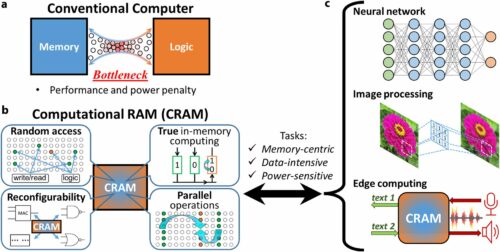Magnetic tunnel junction-based devices could slash AI computing energy use over 1,000 times, offering lower costs and improved efficiency.

Engineering researchers at the University of Minnesota Twin Cities have developed an advanced hardware device that could lower energy consumption in artificial intelligence (AI) computing applications by at least 1,000 times.
As demand for AI applications increases, researchers are exploring methods to enhance energy efficiency while maintaining high performance and low costs. Typically, AI processes involve transferring data between logic, where information is processed, and memory, where it is stored, which uses substantial power and energy. Researchers have showcased a new approach where data remains within the memory, termed computational random-access memory (CRAM).
Magnetic tunnel junctions (MTJs) are nanostructured devices that enhance the performance of hard drives, sensors, and other microelectronics, including Magnetic Random Access Memory (MRAM) used in embedded systems like microcontrollers and smartwatches.
The CRAM architecture they developed enables genuine computation within the memory itself, eliminating the traditional bottleneck caused by the von Neumann architecture’s separation of computation and memory. This architecture is a foundational design for stored-program computers and underpins most contemporary computing systems.
CRAM conducts computations directly within memory cells using an efficient array structure, which eliminates the need for slow and energy-intensive data transfers, according to Karpuzcu. While the most efficient current short-term random access memory (RAM) devices require four or five transistors to encode a binary one or zero, a single MTJ, a spintronic device, can achieve this with much less energy, greater speed, and better resilience in harsh environments.
Spintronic devices utilize electron spin rather than electrical charge to store data, offering a more efficient solution than traditional transistor-based technologies. The team is currently coordinating with semiconductor industry leaders, including those in Minnesota, to facilitate large-scale demonstrations and manufacture the hardware needed to enhance AI capabilities.
Reference: Yang Lv et al, Experimental demonstration of magnetic tunnel junction-based computational random-access memory, npj Unconventional Computing (2024). DOI: 10.1038/s44335-024-00003-3







